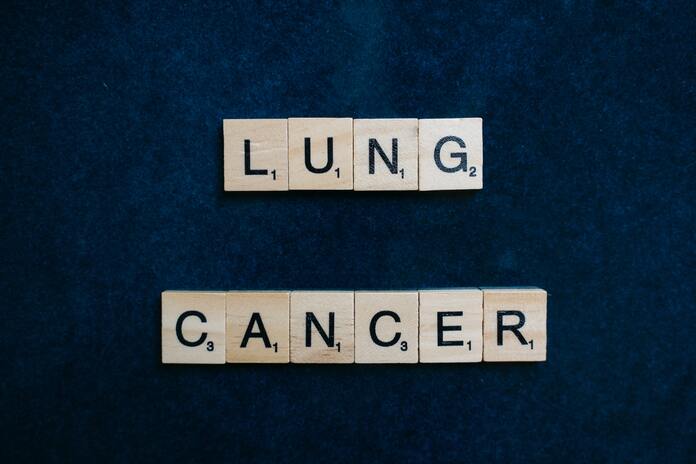- An average of 350 people die from lung cancer each day.
- Over 80% of lung cancer deaths are attributed to cigarette smoking.
- Over 70 recognized carcinogens are present in cigarettes.
The list of most prevalent cancers is headed by it. It also has a significant impact on the number of cancer fatalities. Lung cancer treatment in the U.S. is thought to have cost a staggering $13.4 billion in 2015 alone. Even without considering lost production as a result of illness and death.
The results are always jarring regardless of where you look up your statistics. It’s a sad fact that more people are getting cancer diagnoses. But there is a bright side. Better care and fewer deaths have resulted from diagnostic technologies and medical advancements. Many of the aforementioned scenarios could also be avoided.
Today, we’ll examine the several types of lung cancer that are becoming more common in the U.S., delineate the major risk factors, and discuss some preventative measures you may take.
Small Cell Lung Cancer/h2line]
Small cell lung cancer (SCLC) is the less common of the two primary types of lung cancer. It only makes up around 20% of all lung cancer diagnoses and is typically brought on by cigarette usage.
Small cell carcinoma and mixed small cell carcinoma are the two subtypes of SCLC. It does have a tendency to return in people and does grow and spread more quickly than its non-small cell lung cancer counterpart.
SCLC is diagnosed by doctors using bone scans, PET scans, and C.T. scans. The good news is that chemotherapy and radiation treatments often positively affect both small-cell and mixed-cell carcinoma.
[h2line]Non-Small Cell Lung Cancer
Most cases of lung cancer that have been diagnosed are non-small cell lung cancer (NSCLC), despite its slower growth rate. Additionally, until the latter stages, it frequently exhibits little or no symptoms. It is easier to comprehend when NSCLC is divided into three separate groups. As follows:
-
- Adenocarcinoma: Usually seen on the lung’s surface. It is the most prevalent type of lung cancer, making up about 40% of all NSCLC cases.
- Squamous Cell Carcinoma: This cancer typically appears in the center of the lung, close to where the trachea and bronchi meet.
- Anywhere in the lung, large-cell undifferentiated carcinoma is known to spread and enlarge substantially more quickly than other NSCLC forms. This kind makes up about 10% of all NSCLC cases and is frequently the most challenging to cure.
Risk Factors for Lung Cancer
Lung cancer incidence has been continuously declining, but new cases are rising. Lung cancer continues to be the country’s leading cause of cancer death despite a decreased trend in mortality rates.
There are a number of risk factors that can enhance a person’s likelihood of developing lung cancer, but smoking is unquestionably the biggest one. Over 80% of lung cancer deaths in the U.S. are attributed to cigarette smoking. At least 70 of the 7,000 compounds present in cigarette smoke are recognized carcinogens. Lung cancer has also been related to secondhand smoke.
Exposure to radon is the second most common factor in lung cancer. This naturally produced gas can’t be seen, smelled, or tasted; it forms in rocks. It’s frightening but not nearly as frightening as the innumerable, avoidable deaths from ingesting cigarette smoke.
The prevalence of lung cancer diagnoses outpaces all other cancer types. In 2018, it was responsible for 2.1 million new cases and 1.8 million fatalities in the United States; these figures are liable to rise.
Quitting Smoking Tips
Tragically, many of the additional cases and fatalities might have been preventable. Cigarette smoking is the leading cause of lung cancer and is responsible for an astounding 90% of lung cancer deaths.
Lung cancer risk increases 15 to 30 times with cigarette smoking. However, smoking is far from a given. It is possible to stop smoking, despite how challenging it may be. In truth, there are numerous efficient methods for permanently breaking the habit.
Medications
For smokers who desire to stop, the development of medicinal therapies has been a proper lifeline.
The most frequently prescribed medicine, varenicline, is also quite effective. Varenicline blocks the brain’s nicotine receptors while simulating the dopamine release that smokers often receive from smoking. A well-known antidepressant called bupropion can also be used to lessen the effects of nicotine withdrawal.
Varenicline has a 20.5 percent success rate after a year, whereas bupropion comes second at 18.6 percent. This is really positive when you consider the success rate of non-medical options. We advise you to research these medications online or, if you prefer, speak with your doctor directly.
Replacement Therapy for Nicotine
An even larger list of withdrawal symptoms from nicotine includes strong cravings, mood changes, nausea, and trouble concentrating. The symptoms normally peak in the first week and can start just a few hours after your last nicotine intake. Thankfully, after a month, the physical withdrawal symptoms might disappear.
The majority of those symptoms are intended to be alleviated by nicotine replacement treatment, which drip-feeds a former smoker decreasing dosages of nicotine. It’s common practice to gradually wean a person off their nicotine dependence using gum, patches, sprays, inhalers, and lozenges.
Therapy Using Cognitive Behavior
Cognitive behavioral therapy (CBT), a well-liked talk therapy, specifically targets negative behavior patterns and unproductive ways of thinking. One-on-one counseling is a common treatment component, focusing on techniques like identifying craving triggers, learning coping mechanisms, and boosting self-assurance in a smoker’s capacity to resist them.
CBT is effective in treating anxiety disorders, depression, marital issues, and drug usage issues. Although research on cognitive behavioral smoking cessation therapy is still in its infancy, the early results are overwhelmingly encouraging.
Apps
There are a ton of habit-busting apps in app stores made to reward good conduct and discourage bad behavior. Apps created to assist smokers in quitting use a variety of techniques.
Some applications are made to monitor hunger signals. Some keep track of a smoker’s progress by marking off smoke-free days. In contrast, others compile the amount of money you save by quitting, and still, others put you in touch with a broader group of ex-smokers.
A new habit-busting smart app is only a fast search away. So why are you still waiting?
Conclusion
The likelihood of developing cancer is decreasing. Much of that shift can be attributed to improved medical procedures and screening methods. Nevertheless, lung cancer claims more than 350 lives every day. That number exceeds the sum of cases of pancreatic, prostate, and breast cancer. Smoking is anticipated to be the primary cause of eight out of every ten of those fatalities.
Quitting is never too late. There have never been more therapies and methods for quitting smoking available. Persistence is the real secret. Before finally giving up, a smoker may attempt to stop more than 30 times. So persevere, continue learning and seeking online, and reclaim your life.
Featured Image: Pexels @ Anna Tarazevich







